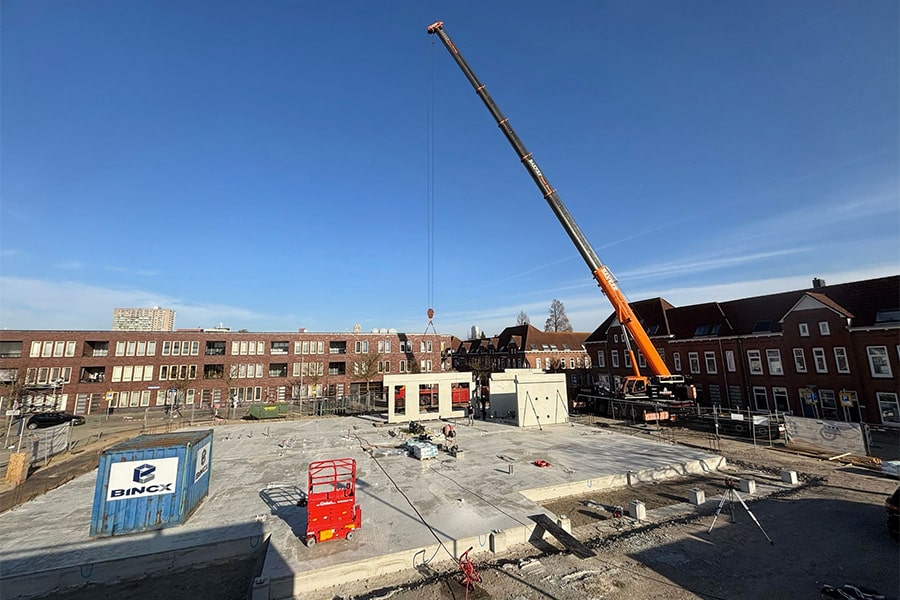
Progress, obstacles and challenges: Where are concrete and steel construction in the circular economy?
But sustainable construction has as much to do with value preservation. With a three-step plan, the Circular Construction Economy Transition Team is working toward a fully circular construction economy by 2050.
Elphi Nelissen, a member of the Fontys Executive Board since Sept. 1, professor of Building Sustainability and chair of the Circular Construction Economy Transition Team, is optimistic about the circular ambition. "Of course we are going to achieve it. If you look at where we came from and where we are now, there is already a big difference. Contractors, consultants and architects know that we can no longer continue using new materials. Many are seeking a new balance and aiming for the highest quality reuse possible."
In three stages to the top
As a metaphor for the process toward a circular economy in 2050, the Circular Construction Economy Transition Team compares it to a mountain climb that goes to the summit in three stages. In the period 2018-2023, it is setting up the base camp. "We took stock of where we are now, formulated our goals, developed an implementation plan and issued advice to the central government," Nelissen says. "In addition, we are working with the team and a lot of people around it to raise awareness. We tell our story everywhere." From 2023-2030, 50% of the ambition will be realized and from 2030-2050, the goal, "the top," will be reached.
Better to recycle steel directly than indirectly
With steel as a raw material, steel construction is in a favorable position. It is 100% recyclable. Still, there are big steps to be made here, too, according to Nelissen. "Steel smelting is one way to build circularly, but it also requires energy, so better to reuse the steel beams directly. That possibility arises if the beams are not welded, but bolted. Moreover, if we couple the bolting technique with standardized sizes, the chances of direct reuse become
pieces bigger."
Innovative concrete connections
The use of concrete has already decreased quite a bit due to the Concrete Agreement. In the process, concrete is also recyclable, but this process is costly and not yet ready for the large market. "Here is still a challenge for technical developers. Other compounds can also be devised for concrete that make the elements more suitable for reuse. Constructors and architects could also split the large concrete elements, making them more reusable."
First steps
Nelissen understands that contractors are putting off taking the first steps. Still, she wants to encourage them to get started. "From 2023, circular construction will become a condition in tenders. There are coaches who can guide the first steps toward circularity excellently." On the other hand, Nelissen signals that these steps are extra difficult if the motivation does not come from within. "You have to believe in it, of course."
Circularity is a concept
Over all, Nelissen is pleased with the progress of the roadmap. "Circularity is a concept and our climb is on track. It won't be possible to be completely circular by 2050, but with the necessary innovations, we can certainly achieve that for new construction."



